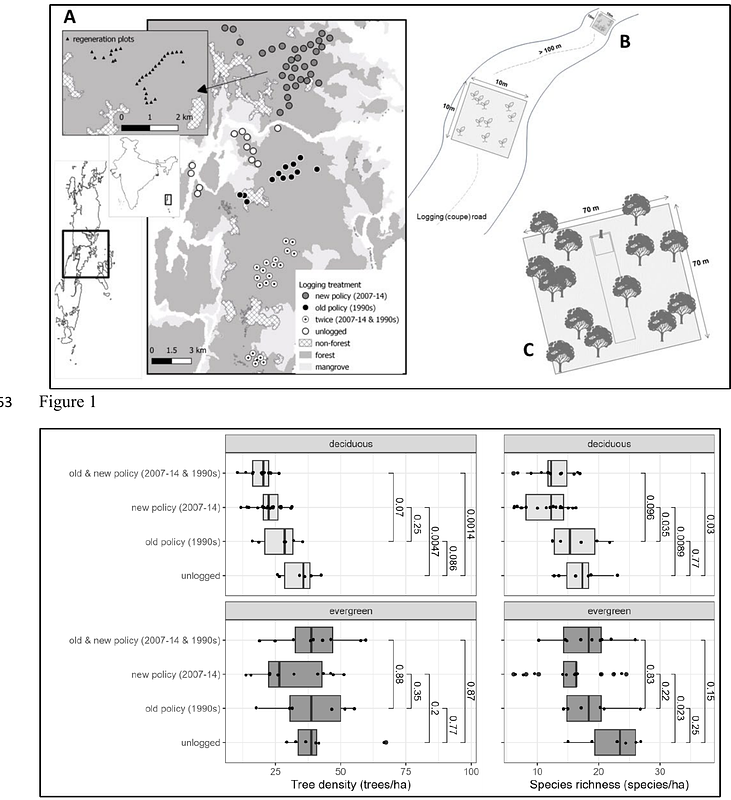Taking stock of selective logging in the Andaman Islands, India: recent & legacy effects of timber extraction, assisted natural regeneration and a revamped working plan

Taking stock of selective logging in the Andaman Islands, India: recent & legacy effects of timber extraction, assisted natural regeneration and a revamped working plan
Surendra, A.; Sridhar, V.; Osuri, A. M.; Ratnam, J.
AbstractForest management is an evolving balance between biodiversity conservation and economic needs. A shift in Andaman Islands (India) Working Plan mandate in 2000s reflects this evolution. Our study independently assesses the impact of said policy change on post-logging recovery of forests in Baratang and Middle Andaman forest divisions. From December 2017 to May 2018, we placed seventy-six 0.49ha plots across evergreen and deciduous patches and compared large-tree (above 180cm girth) density and diversity across forests that were logged after 2005 focussing on sustainability, logged in 1990s focussing on timber, logged twice in 1990s and after 2005, and unlogged forests. We assessed forest regeneration in thirty 0.01ha plots along a coupe road within forests logged after 2005. Forests logged after 2005 had similar density of large trees as forests logged in 1990s (despite having 1/3rd the recovery time), indicating reduced offtake or better recruitment. Along the unlogged to once-logged to twice-logged gradient, the dominance of Pterocarpus dalbergioides in deciduous patches decreased while the dominance of Diptercarpus sp. in evergreen patches increased. Compared to natural regeneration, proportionately more deciduous saplings were planted in both evergreen and deciduous patches. The new working plan maintains timber stock but not diversity. We make six simple recommendations to better align practice with the Working Plan mandate.


